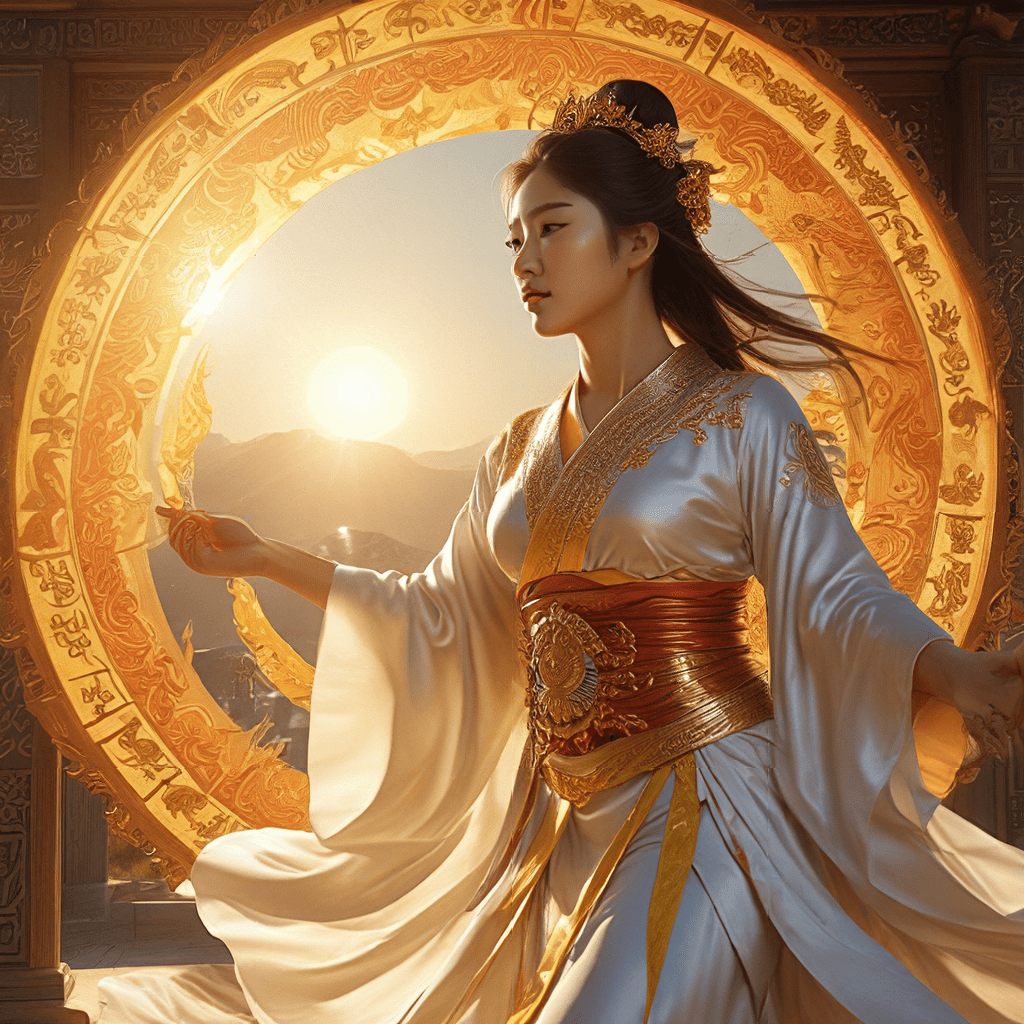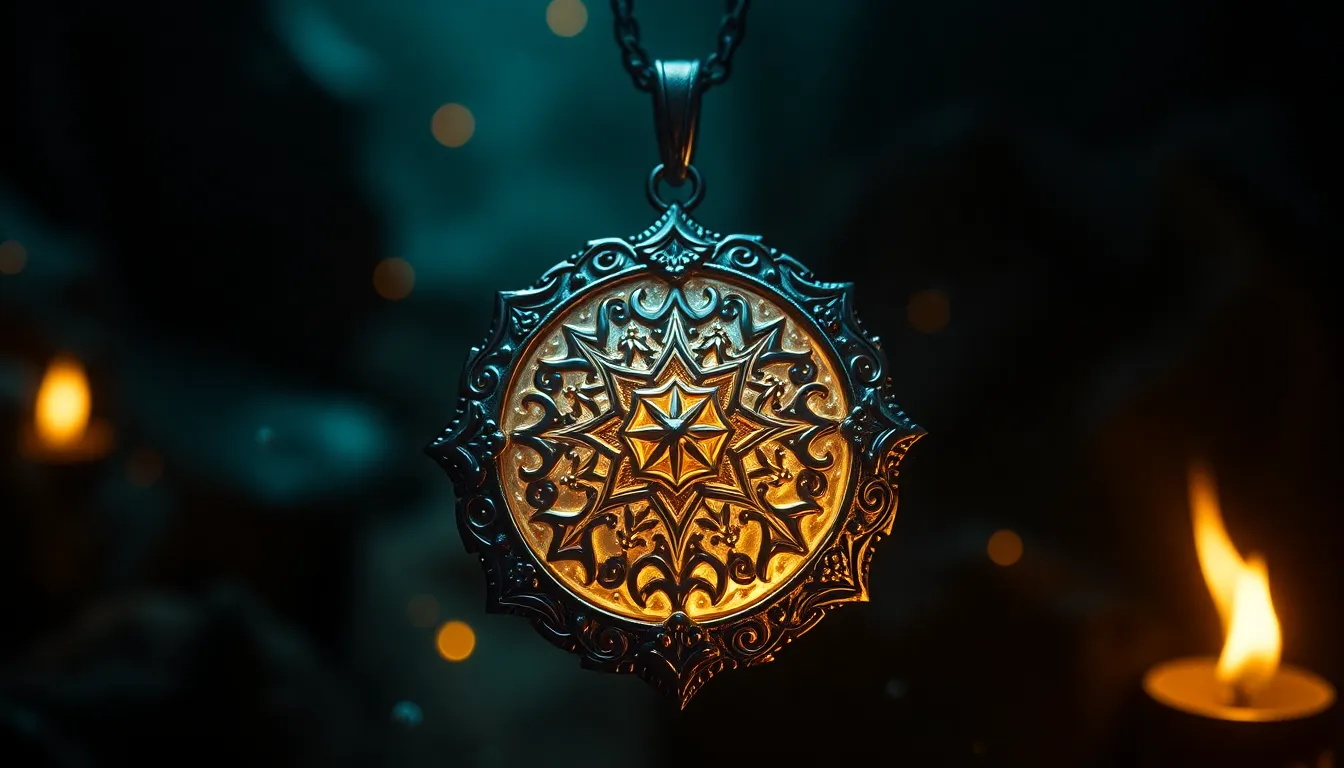Korean Mythology: The Story of the Sun Goddess
In the vast and captivating realm of Korean mythology, the Sun Goddess, known as Haenimseonyeo or Haegumi, stands as a central figure, embodying the life-giving power of the sun and its enduring influence on the Korean people. Her story, woven into the very fabric of Korean culture, transcends the boundaries of mere myth, providing profound insights into the origin of the world, the cosmic dance of celestial bodies, and the enduring spirit of the Korean people.
The Creation of the World and the Birth of the Sun Goddess
The creation myth of the Korean people places Haenimseonyeo at the heart of the world's beginnings. According to legend, the universe was once enveloped in an ethereal void, a state of pure nothingness. Within this primordial void, a divine being known as Hwanung, the Son of Heaven, descended from the heavens and established his abode on Mount Taebaeksan, the highest peak in the Korean peninsula.
Hwanung, seeking to bring order and life to the chaotic void, sent his messengers to the Earthly Realm to summon spirits of the Three Realms, the Heaven Realm, the Earthly Realm, and the Underworld. From the union of these spirits, Hwanung created a race of people known as Han, the ancestors of the Korean people.
From this lineage, a daughter named Haenimseonyeo emerged, radiant as the sun itself. She was born with a divine radiance and a power that reflected the life-giving warmth of the sun.
The Sun Goddess and Her Brother, the Moon God
The birth of Haenimseonyeo was not the only celestial event that unfolded in the early days of creation. Her brother, Dal (달), emerged from the union of Hwanung and a Mountain Spirit and was bestowed with the power to rule over the moon. He became known as the Moon God, a celestial counterpart to his sister.
The Sun Goddess and the Moon God ruled over the day and night respectively, bringing light and darkness to the world. Their celestial dance, with the Sun Goddess rising in the east, casting her radiant glow across the land, and the Moon God ascending in the west, bathing the world in a silvery light, established a timeless rhythm that continues to influence Korean culture to this day.
The Sun Goddess’s Descent from Heaven
The Sun Goddess's journey is not confined to the heavens. She is also connected to the world of humans, playing a pivotal role in the establishment of the Korean nation. According to legend, Haenimseonyeo, moved by the plight of the Korean people, descended from the heavens to Earth, seeking to guide them and offer them her divine protection.
Her descent was not without sacrifice. She left behind her celestial abode, relinquishing the comfort of the heavens to walk among mortals. This act of selflessness underscores the deep connection between the Sun Goddess and the Korean people.
The Sun Goddess’s Role in Korean Culture and Belief
Haenimseonyeo's presence permeates Korean culture, leaving an indelible mark on Korean beliefs, traditions, and folklore. She is revered as a symbol of life, fertility, and the enduring power of the sun. The Korean people have long acknowledged the vital role the sun plays in their lives, providing warmth, light, and sustaining the cycle of life.
The Sun Goddess is often invoked in prayers and rituals seeking good fortune, abundant harvests, and protection from harm. Her image is depicted in Korean art and literature, symbolizing the celestial forces that govern the world and the enduring spirit of the Korean people.
The Sun Goddess’s Symbolism and Significance
Haenimseonyeo's significance transcends her role as a celestial deity. Her story speaks to the profound connection between humanity and the natural world, and the enduring power of the sun in shaping civilizations. The Sun Goddess embodies the life-giving energy of the sun, symbolizing creation, growth, and the cycle of life and death.
The Sun Goddess's descent from heaven represents a willingness to sacrifice for the good of humanity. It highlights the importance of divine intervention in the lives of mortals and the sacred bond between humans and the celestial realm.
The Sun Goddess in Korean Art and Literature
The Sun Goddess's presence transcends the realm of myth, finding expression in the artistic and literary traditions of Korea. In art, she is depicted in a variety of forms, often as a radiant figure radiating light and warmth. Paintings, sculptures, and decorative motifs showcase Haenimseonyeo as a celestial being, embodying the life-giving power of the sun. These artworks often feature her in a celestial chariot, soaring through the heavens, or surrounded by celestial objects, such as stars, clouds, and mythical creatures associated with the sun.
Korean literature also offers glimpses into the Sun Goddess's story and significance. Traditional tales, poems, and folk songs often weave her image into narratives, celebrating her role as a protector and symbol of hope. For example, the "Tale of the Sun and Moon" tells the story of how the Sun Goddess and the Moon God were separated, a narrative that underscores the enduring power of their celestial dance and the importance of balance in the universe.
Theories Regarding the Origin of the Sun Goddess Myth
The Sun Goddess myth, like many other myths and legends, has been the subject of scholarly discussion and interpretation. Scholars have proposed various theories regarding its origins and significance. Some scholars suggest that the myth reflects the ancient Korean people's reverence for the sun, a celestial body that played a vital role in their agricultural practices and daily lives. The sun provided warmth, light, and facilitated the growth of crops, making it a source of both sustenance and spiritual inspiration.
Another theory points to the potential influence of shamanistic practices in the development of the Sun Goddess myth. Shamanism, a spiritual tradition prevalent in ancient Korea, involved interacting with the spirit world and seeking guidance from celestial beings. The Sun Goddess may have become a central figure in shamanistic rituals, representing the power and wisdom associated with the celestial realm.
The Sun Goddess as a Representation of Power and Authority
The Sun Goddess, as a celestial deity, embodies power and authority, not just as a bringer of life but also as a symbol of cosmic order. Her position as a ruler of the heavens, overseeing the celestial bodies and their movements, reflects the importance of governance and the need for order in the universe.
This aspect of Haenimseonyeo's symbolism resonated with the Korean people, influencing their understanding of leadership and the social hierarchy. The Sun Goddess's power and authority served as a model for rulers and individuals in positions of leadership, emphasizing the importance of justice, wisdom, and the ability to guide and protect.
The Sun Goddess and the Concept of Life and Death
The Sun Goddess myth also explores the profound concept of life and death, a theme that resonates across cultures and civilizations. The sun's daily cycle, from sunrise to sunset and its eventual disappearance, offers a powerful metaphor for the cycle of life and death.
Haenimseonyeo's descent from heaven and her willingness to sacrifice her celestial abode for the benefit of humanity underscores the inherent connection between life and death. Her journey from the heavens to the world of mortals suggests that life and death are not separate but intertwined, part of a continuous cycle of creation and renewal.
The Sun Goddess’s Influence on Korean Society and Tradition
The Sun Goddess's story and symbolism have profoundly influenced Korean society and tradition, shaping beliefs, customs, and cultural practices. Her influence is evident in various aspects of Korean life, from festivals and rituals to art and literature.
One of the most notable examples is the Korean New Year celebration, Seollal. During Seollal, the sun is symbolically welcomed as a sign of renewal and prosperity. The celebration includes traditional rituals and customs that pay homage to the Sun Goddess and seek her blessings for the coming year.
The Sun Goddess's influence is also visible in Korean folklore and mythology. Numerous tales and legends feature her as a protector, a source of wisdom, or a symbol of hope. These stories often reflect the Korean people's deep reverence for the sun and its life-giving power, signifying the enduring connection between humanity and the celestial realm.
FAQs
Q: What is the Sun Goddess's other name?
A: The Sun Goddess is known as Haenimseonyeo or Haegumi in Korean mythology.
Q: Who is the Moon God?
A: The Moon God in Korean mythology is Haenimseonyeo's brother, Dal.
Q: What is the significance of the Sun Goddess's descent from heaven?
A: The Sun Goddess's descent from heaven symbolizes her sacrifice and willingness to help humanity. It highlights the close connection between the celestial realm and the world of mortals.
Q: What are some examples of the Sun Goddess's influence on Korean culture?
A: The Sun Goddess's influence is seen in Korean festivals like Seollal, traditional art, folklore, and mythology. She is often depicted as a protector and a symbol of hope.



